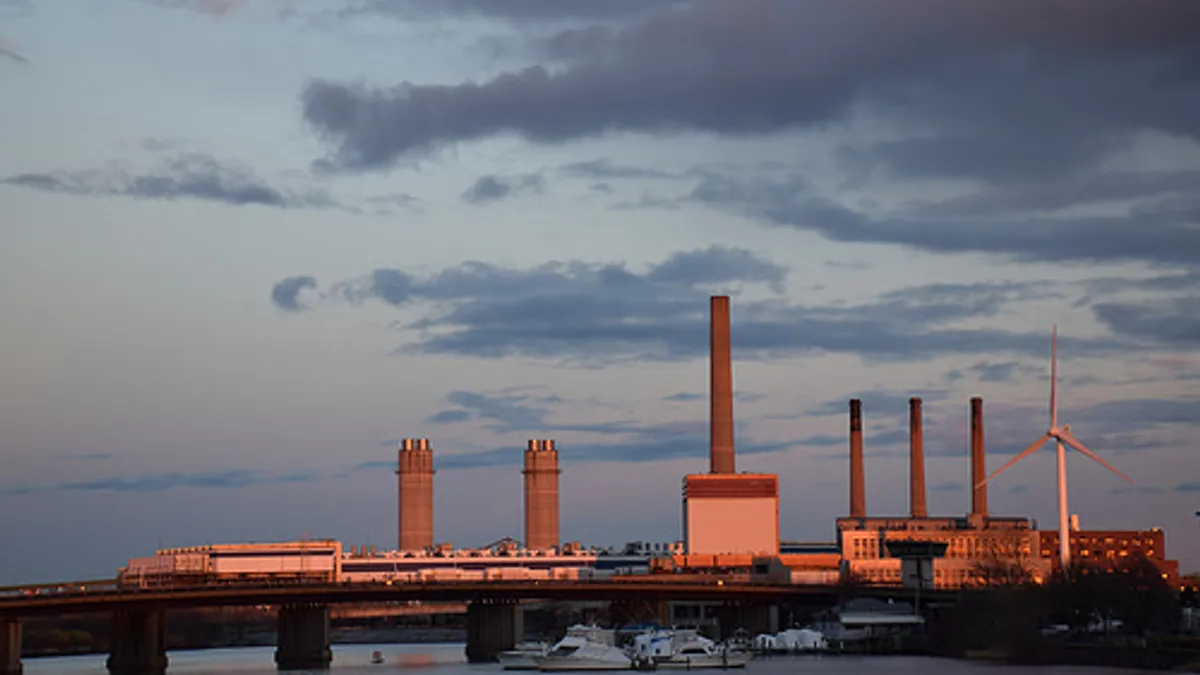Dive Brief:
- The New England Independent System Operator (ISO-NE) on April 15 filed an Energy Security Improvements (ESI) proposal with federal regulators, proposing three new market products to help ensure reliability during fuel shortages and cold snaps when natural gas supply is prioritized for home heating.
- The new operational capabilities include a Day-Ahead Energy Imbalance Reserve (EIR); Day-Ahead Generation Contingency Reserve (GCR); and Day-Ahead Replacement Energy Reserve (RER) that would help restore depleted operating reserves and address load forecast errors.
- The ISO says its plan will "create strong financial incentives for resources to maintain more secure energy supplies at a modest cost to consumers." The grid operator's filing includes an alternative proposal supported by the New England Power Pool (NEPOOL), which amends the ESI to limit the calculation of the RER quantity and resulting costs to the months of December through February, among other things.
Dive Insight:
The New England energy security filing is a complex proposal that spans more than 1,700 pages when testimony and the market participants' alternative is included. NEPOOL participants declined to support ISO-NE's proposal, and with comments due in 30 days observers say objections to the grid operator's plan will be under intense scrutiny.
Typically, a proposal failing to garner 60% approval from market participants would go through a "jump ball" process at the Federal Energy Regulatory Commission where ISO-NE would explain why its own filing is superior to the alternative. Because the ESI is a compliance filing responding to a 2018 request from FERC, those rules do not apply — but the ISO agreed during the stakeholder process to submit any alternative proposals that had support from 60% of participants.
ISO officials declined to speculate on how FERC would approach the filing, but a spokesperson told Utility Dive the commission "does have more leeway" in approving parts of each proposal.
Fundamentally, the ISO proposal is designed to address regional energy challenges caused by an evolving resource mix: more gas, solar and wind resources are being utilized and these generation sources cannot be stored on site. The ISO says its filing seeks to alter the current market structure to "create incentives for its fleet to invest in the energy supply arrangements and technologies on which the region depends."
But securing fuel includes an upfront cost, and generators lack the incentive to make those investments if the expected price of energy it would generate is not high enough.
The proposed EIR would compensate generators that work to satisfy the ISO's load forecast, while the GCR would align with existing real-time operating reserves and "provide a day-ahead means to ensure energy reserves are available," according to the ISO.
The NEPOOL alternative makes three changes to the ESI, including setting the RER quantity to zero during non-winter months and not allowing the ISO to increase the RER amount in case its load forecast is in error.
The grid operator's proposal procures the three new market capabilities as options on real-time energy, and the NEPOOL alternative would also amend how option strike prices would be calculated and eventually settled.
In a blog post on its ESI filing, the grid operator explained that under its proposal the option seller receives an upfront payment. "In exchange for this payment, the ISO has the option to 'call' on its resource's electric energy during the operating day in order to meet operational needs of the power system," ISO-NE said.
"This option structure provides stronger incentives for resources that sell options to be available to provide energy in real-time when the system requires than other structures the ISO evaluated, such as a forward sale of ancillary services that uses the two-settlement approach employed for energy," ISO-NE said.
FERC directed the ISO to address market challenges after Exelon announced the planned two-stage closure of its Mystic Generating Station in the early 2020s. The ESI plan resulted from more than two dozen stakeholder meetings, but an April 2 vote by the NEPOOL market participants committee garnered less than 40% support. The alternative proposal was approved with 61.7% in favor.
ISO-NE has asked FERC to accept the plan, and have it become effective no later than Nov. 1, 2020.














